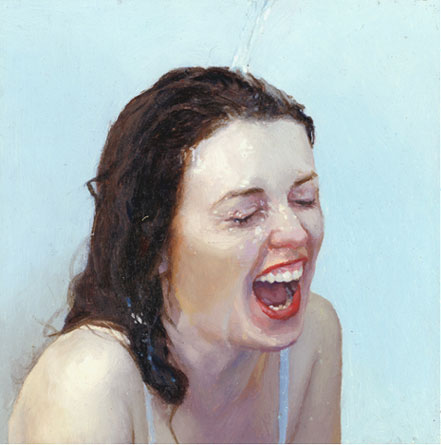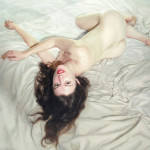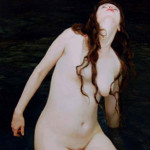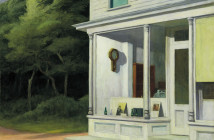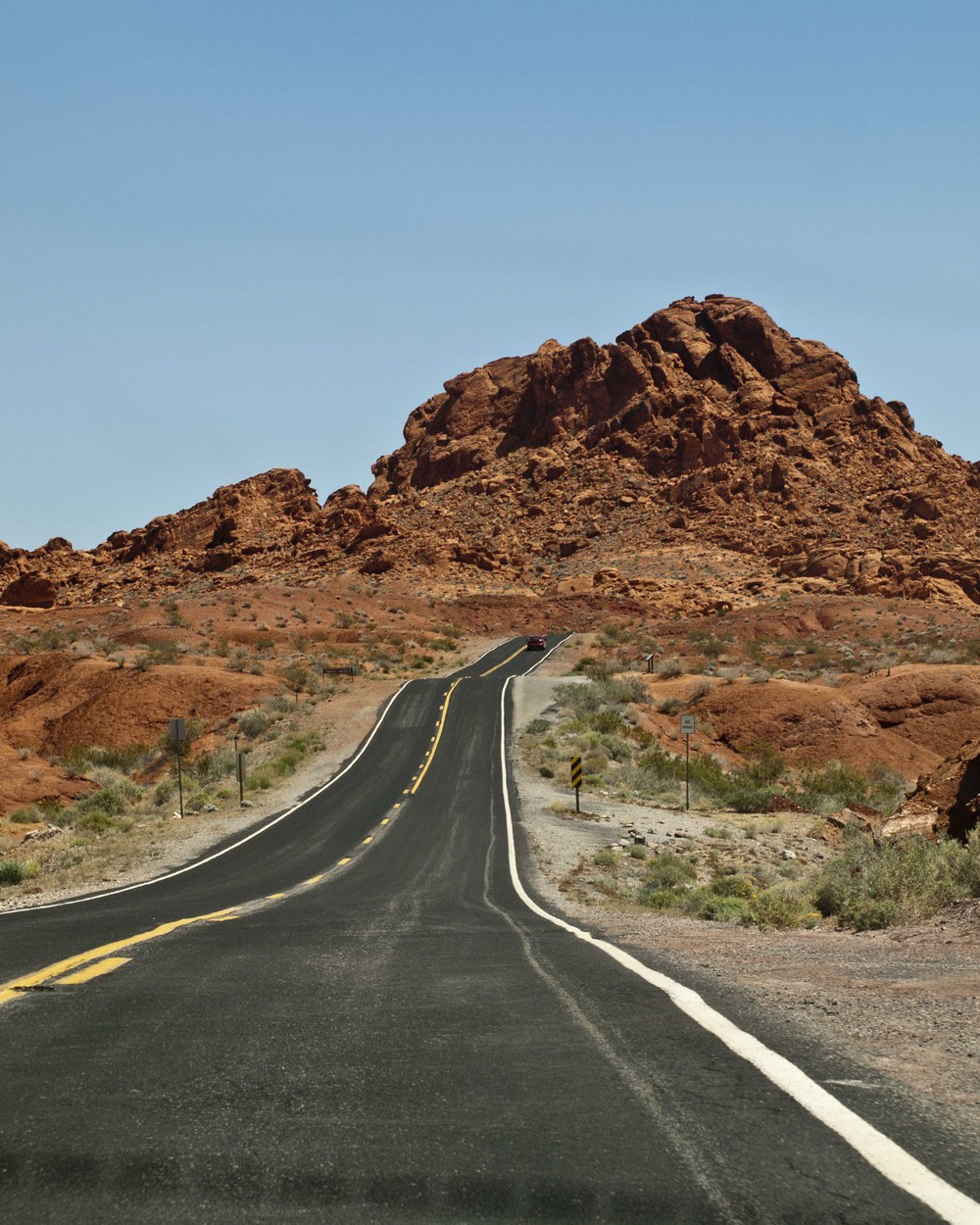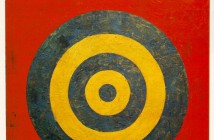People are always wondering at the last word in painting. What was left after Picasso? Was de Kooning destined to be the last hurrah? It seems every generation has one last gasp that is predicted to be the final breath of painting and the end of an art form. Granted, with the rise of sculpture and 3 dimensional work, alongside time-based, performance-based, digital and video installation, it does seem more and more difficult to find artists devoted to the craft of painting who have new and exciting things to say with brush and canvas. And then you walk by a gallery in Key West and spy Nathalie Vogel.
In her show "Two Generations View Life" at the Cocco & Salem Imagine Art Gallery, Nathalie shared the stage with her mother, Marylene Proner. I was lucky enough to catch this show while in Key West and was incredibly impressed and moved by Nathalie's take on the figure and the relationship to liquid and water. A self-admitted de Kooning fanatic, the complexities of solid and liquid in both the act of painting and the human form that the master created are a delicate balance that, when rendered, creates dramatic effect in painting. Nathalie has taken this balance with a super-realist bent and her works shift from vivid details of porcelain skin to sensual figures that pour and drip from the picture plane.
With work in numerous private collections across North America, Vogel has won honors like the Best in Show prize for the Mid Atlantic New Painting Exhibition in 2009 and selection in the New Directions 2009, National Juried Contemporary Art Exhibition. Her paintings have been compared to those of Jean-Auguste-Dominique Ingres for her Classical treatment of the female form and her exacting skill. However, from this foundation in the Neo-Classicist tradition of line, color, and composition Vogel has created a wholly contemporary and unique take on beauty and myth.
In getting to know Nathalie better I was taken, as with her work, with an artist who is extraordinarily comfortable with traditions in art—both in her skill and understanding—who is insistent in her pursuit of more viable and true representations of both art and life.
KCE: It seems you live and work in NJ and Toronto. First question: Why Key West? What brought your work there? I see your mother has painted many scenes in KW, but is there a connection to you and your work beyond that? Also, how do you see Key West as an "art" town?
NV: It was originally the gallery owner's idea; he was struck by the difference of approach between mother and daughter. Key West is very much like Reunion, an island in the Indian Ocean, where I grew up, with its lush vegetation and Creole style houses. Key West is at a special spot, the tip of the peninsula. It has the reputation of bringing together all the crazy people in the US. I suppose the theme of the island is present in my work, with the isolation of the figure in liquid-like landscapes, with the psychological undertones that carries.
KCE: For "Two Generations," you shared a show with your mother, Marylene Proner. How do you see having such an accomplished artist as a parent impacting your work? Your decision to be an artist? Your approach to painting? Your mother's work is certainly very different, so this is an interesting dynamic for the show and your work, I would guess.
NV: I come from a family of painters. I learned from my mother and grandmother. I avoid any kind of narrative in my work while sticking with figuration, figurative style. What my mother and I work out through painting is very different. The sense of depth in a painting is very important to me as opposed to my mother who is more sensitive to the tactile qualities of paint. It is important to me to adapt my way of painting to what I'm painting in that moment, to render an image that is rich in layers, figuratively and technically.
KCE: In your work there is a Classical take on the form almost sharpened to a super-realism and embedded in ideas of liquid. What painters do you consider your teachers or influences in art?
NV: I'm very sensitive to how painters have been rendering skin. I love the sense of depth of space in Jenny Dubnau's portraits, for example, but the layering of the skin is not cohesive enough for me. I like the sense of boundaries when painting the skin. I do not see the body as a container for a theoretical soul, but as a mind of its own. I am very influenced by the philosophy of Michel Onfray in this way. In terms of representing the skin, my favorite painter is Cynthia Westwood, whose paintings I wish were more accessible. I also love the dewy texture of Bouguereau's skins, as well as the air in the paintings of Frederick Church, but do not give in to these painter's narratives.
Vermeer's language makes a lot of sense to me. His layering and thickness of paint can be very different from one painting to another, even within the same painting; Daniel Arasse talks about this wonderfully in his book Faith in Painting. I'm very fond of early Renaissance Dutch painters like Van Eyck, who focused on a private relationship with the image as opposed to earlier church paintings, which were created for the general public. I also love the visual vibrating that happens in paintings by Renoir or Rothko.
KCE: Can you talk a bit about your manner of working? Your studio time? Preparatory sketches? Maybe this is better asked specifically instead: Could you describe the work, planning, approach, etc., that goes into a painting like V from 2008?
NV: I like to continuously and randomly jolt little sketches of an idea, and over time some ideas concur with each other and overlap. The ones that stick to my mind obsessively under different forms attract my attention. I have a very classical training and I use photography and electronics as tools.
A side note on this: the most important tool is the human eye behind the painting and the presence of the mind and body of the painter in the painting. Whatever tools a painter uses, the degree of perceptivity of the artist shows in the painting.
The sketches are a departure point for an idea of an enigmatic situation. Jennifer, who is a friend of mine, was the model for the painting A. I created a situation in which I photographed the model and then chose images that had the implications I'm looking for, and then I rework the image and reconstruct my vision.
KCE: Where are you now in your work? What is working? What isn't? What direction do you see you and your work headed?
NV: I would like to incorporate all this in my paintings, going from a somewhat simplified section to a more focused area, while making the transitions very fluid. I also would like to stretch more space around the figure.
KCE: Where do you see your work in the greater conversation on art?
NV: I do not give into the prevailing climate of nihilism and opt rather for ways of exploring our relationship with the living body. As of today, we still don't understand the energies that circulate through a body, much less what the body is capable of, like telepathy or healing.
KCE: Other items that are particularly exciting/interesting/etc on you, your art, etc. that we may want to think on?
NV: I do not know if it is of interest or not but it sure defined my life later. My first years were spent in an Indou family in Mauricius as my dad was an ethnologist at the time, I even talked that language before I talked French. Now my English is not perfect and my French has become bizarre my friends tell me. So it seems I'm always between countries and languages, quite funny I think.
KCE: And finally, what is upcoming for you and your work?
NV: I have been invited to that museum show in Colorado at the Madder Museum, and continue to update my site here.
- Natalie Vogel, Second Movement, oil on canvas.
- Natalie Vogel, A Upside Down, oil on canvas.
Cocco & Salem Imagine Art in Key West, Florida
"Two Generations View Life" was on view January, 20th - February 2, 2010 at Cocco & Salem Imagine Art.
All images are courtesy of the artist and the Cocco & Salem Imagine Art website.

